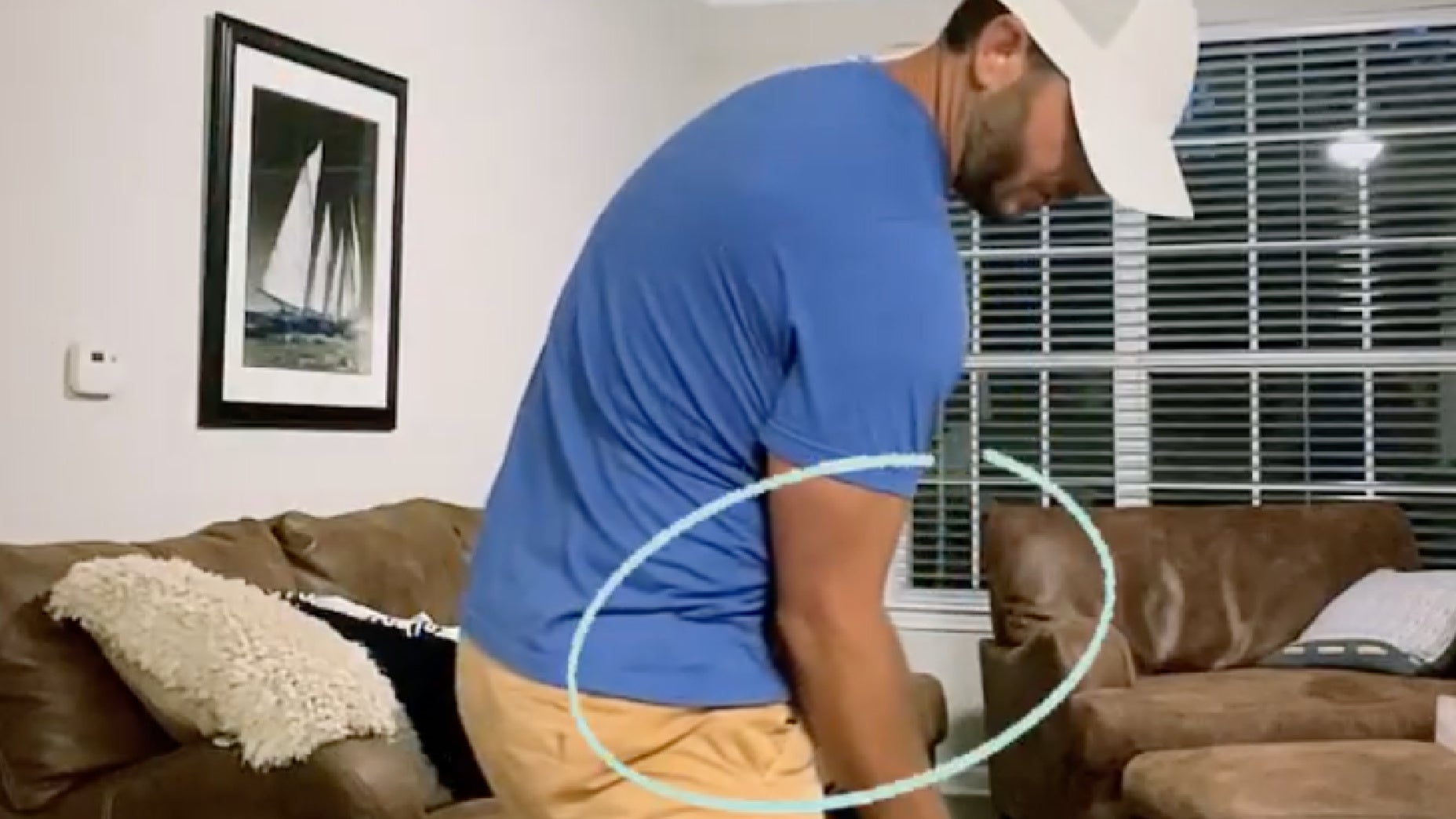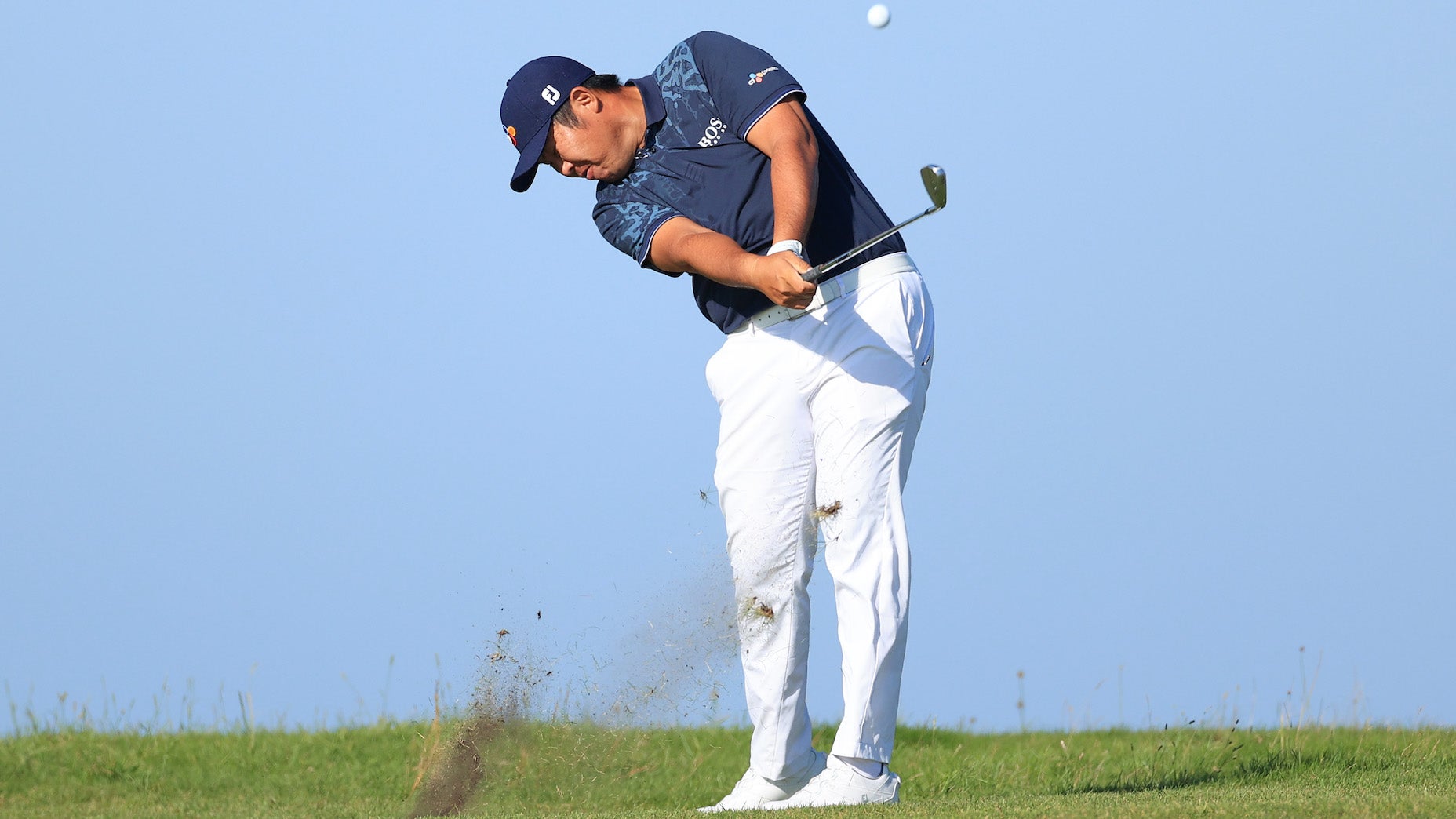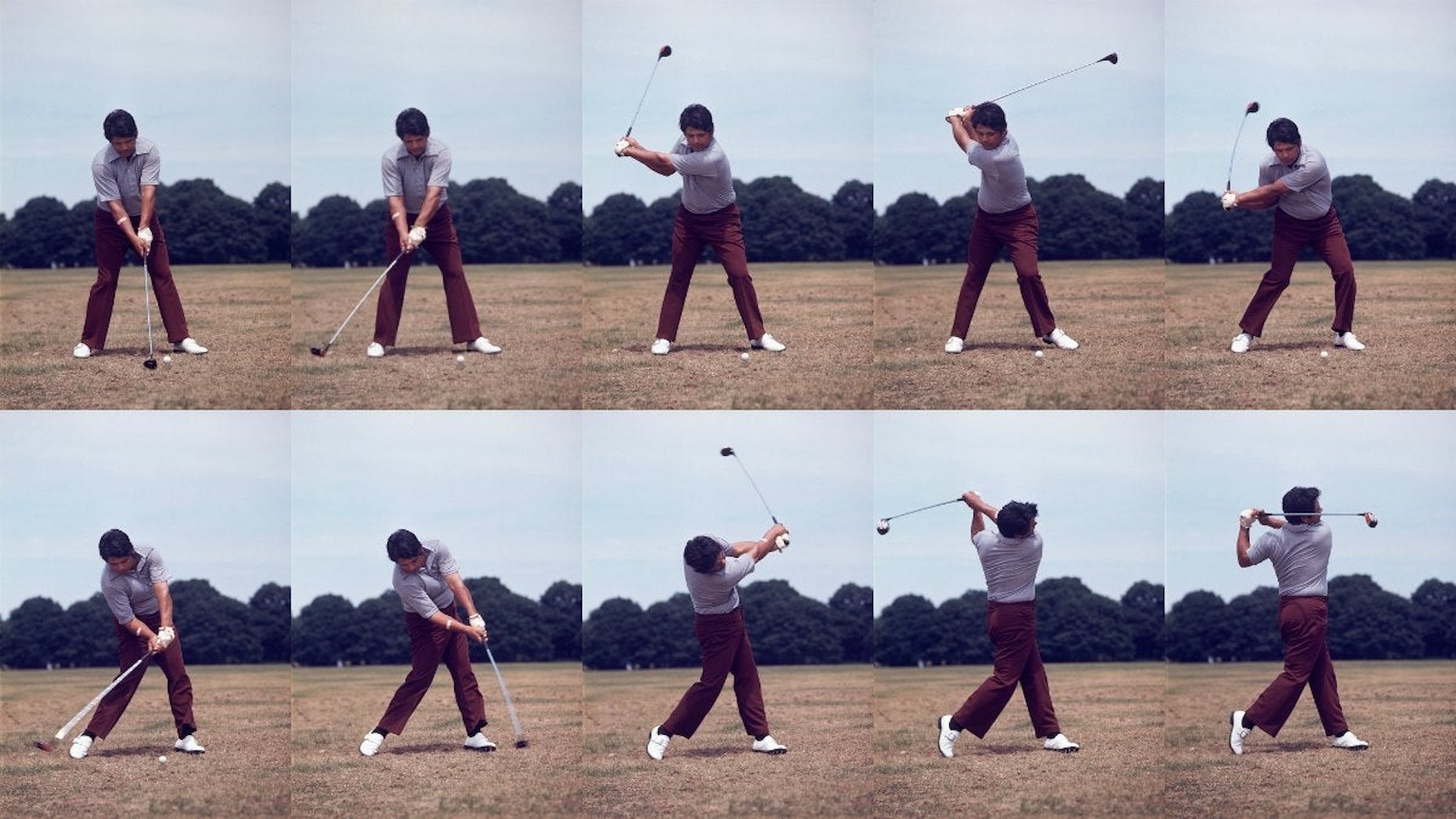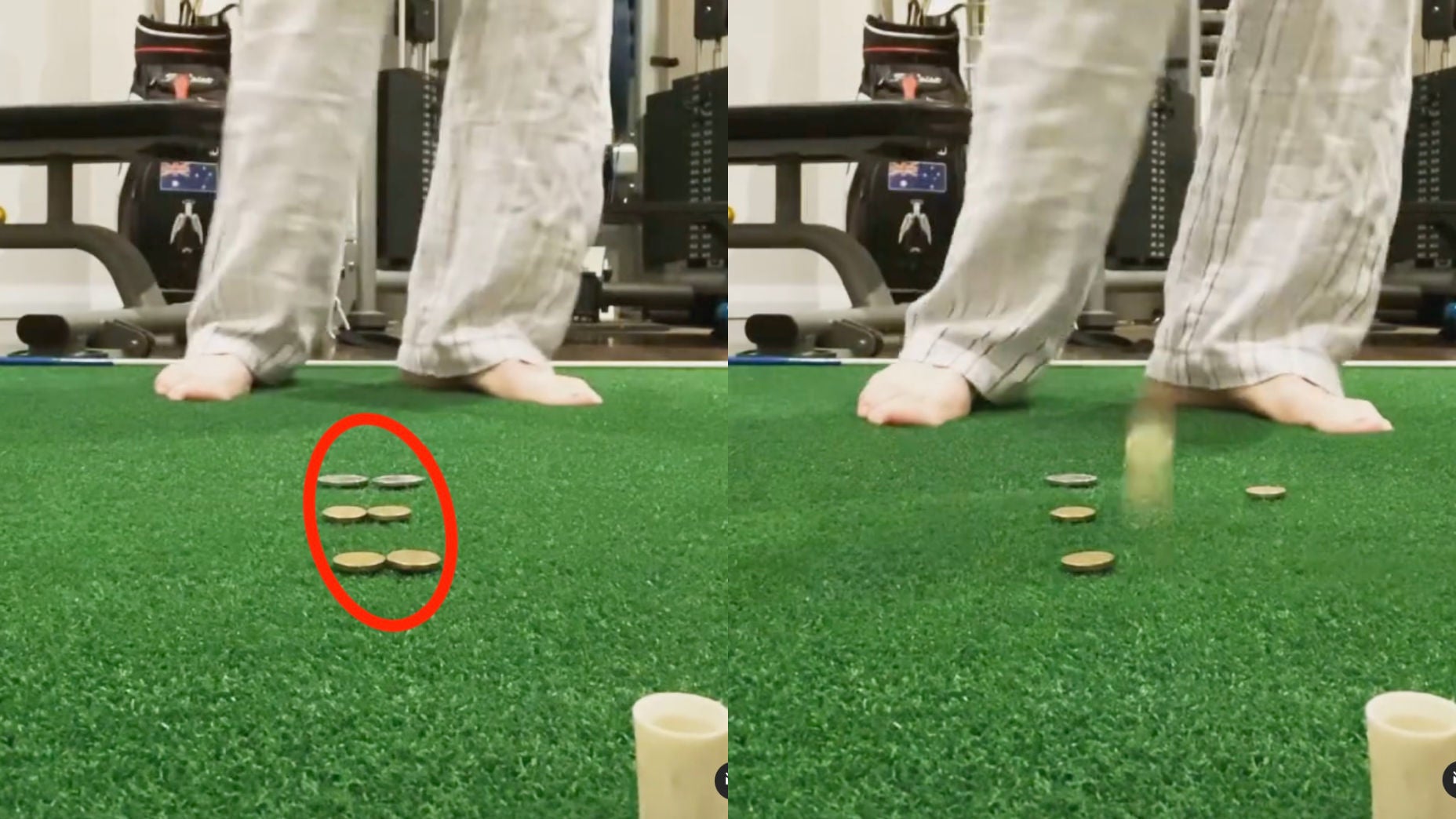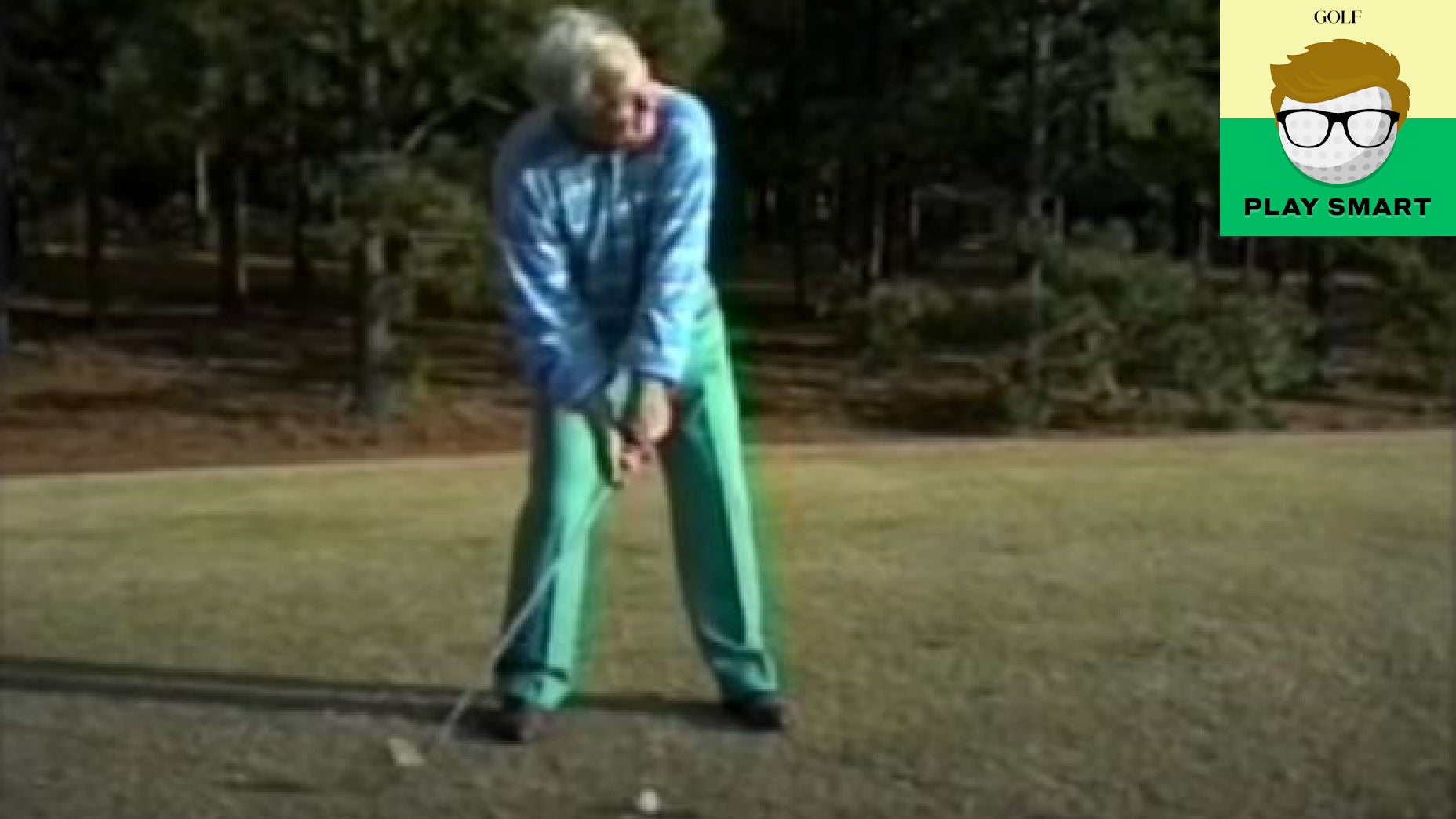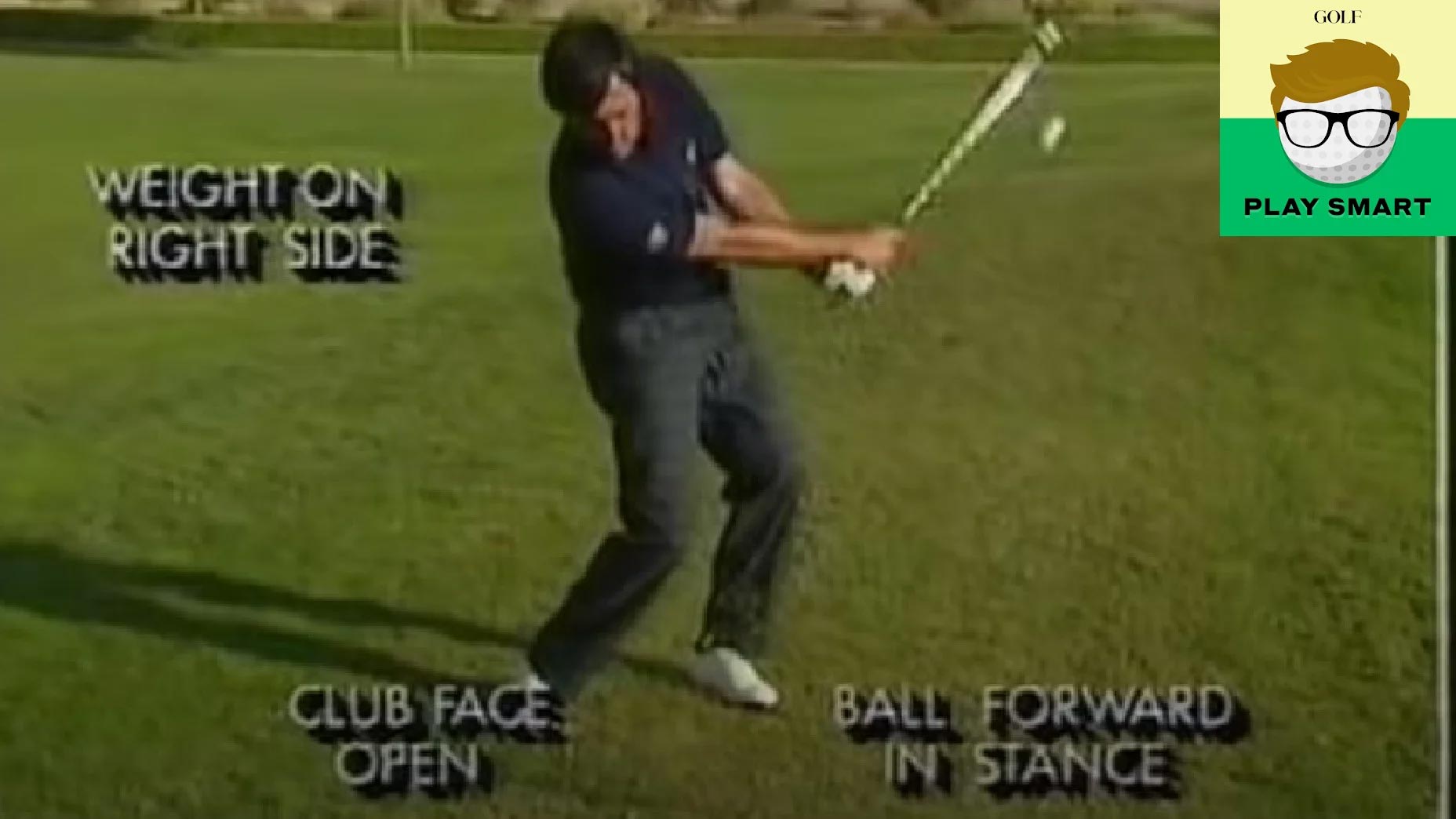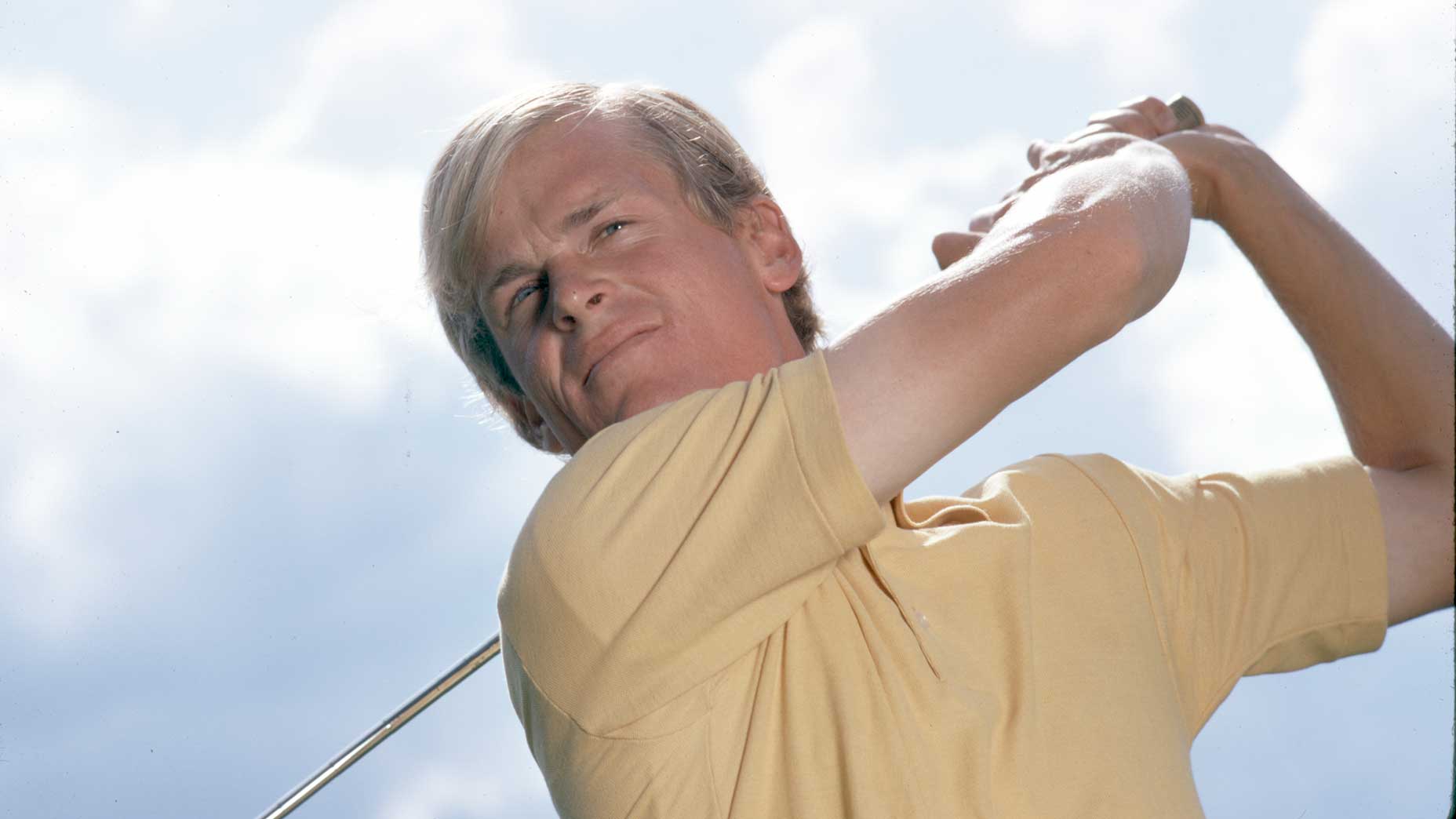10 reasons why you can’t stop topping the golf ball
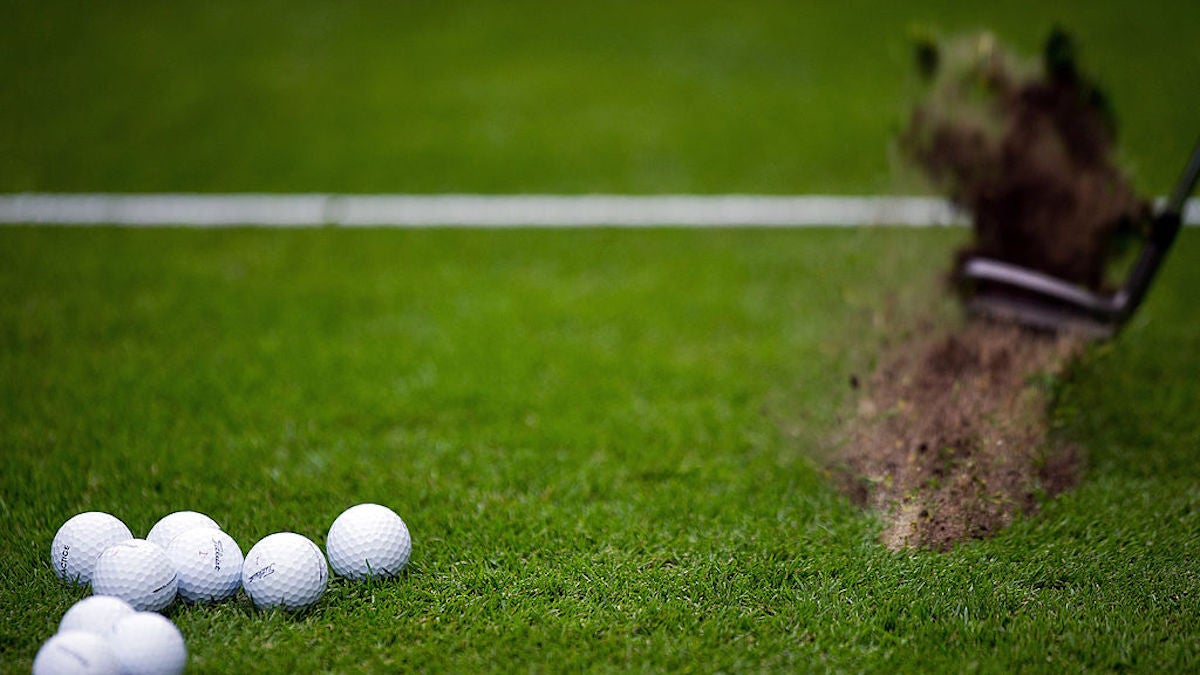
Hitting down on the ball can help you not top it.
(GETTY)
One of the most common misses is topping or thinning the golf ball. Often, a thin shot can be recoverable, but topping can be a score-killing shot, and immensely frustrating if you don’t know what’s causing it. In simplest terms, in order to get the ball up into the air — and not rolling across the ground — is to hit down into the dirt.

If that’s not happening, there may be a few reasons why. Here are some of the most common I see:
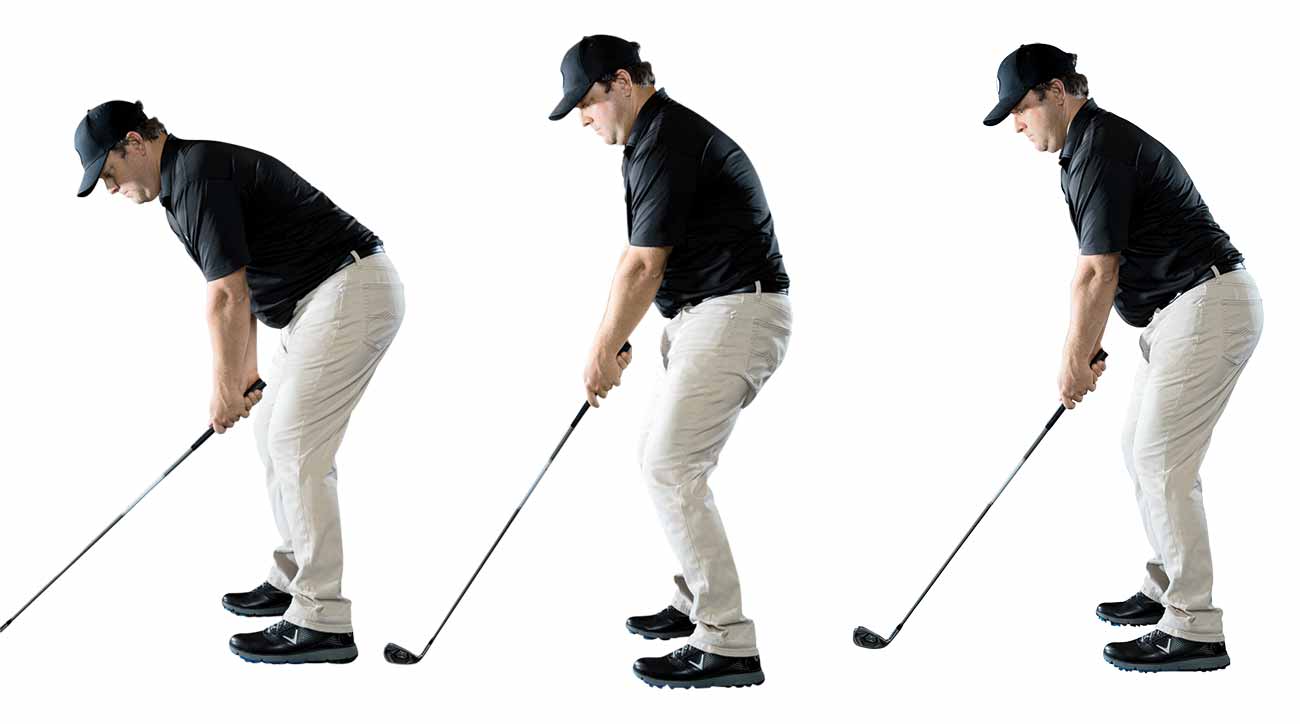
1. Bad Posture
Good posture is the basis for solid contact. Bowing forward from your hips so that your hands can hang below your shoulders can put you in balance and also get the club down to the ground. Too much knee flex or squatting can often make it extremely difficult to get the club down into the turf, and therefore get the ball into the air.
2. Trying to lift the ball
For those golfers who don’t understand how to get the ball in the air, there can be a strong instinct to try to lift the ball.
When your ball is at a neutral position on the ground, your club needs to dig into the ground in order to achieve contact at the true loft of your club. This is one of the many counter-intuitive motions in golf, many of which take time to learn. Once you are in good posture, one of my favorite drills is to feel your trail arm straighten as if you were throwing your club down into the dirt.
I learned this drill by watching Bob Toski repeatedly throw a ball onto the ground, making perfect contact with a ball placed between his feet. This downward extension serves to get the clubhead down to the turf enough to significantly improve the ball flight.
3. Standing too far away from the ball
If you stand too far away from the ball at address, it’s almost difficult not to top the ball without a heroic move. Reaching for the ball — where your arms often get into a diagonal position — will often lead to a thin shot or a top.
4. Arms not extending down
When you make your backswing, your trail elbow folds to create power. The trail arm needs to extend and straighten down on the downswing to get the clubhead down to the ground. This motion can feel like you’re actually throwing the club toward the ground. It can be helpful to practice this by placing a ball in your right hand, from your golf posture. Allow the elbow to fold as it would in your backswing and then throw the ball so that it hits the ground. This motion can be extremely helpful to get the full sense of how much straightening occurs to allow your arms to extend down.
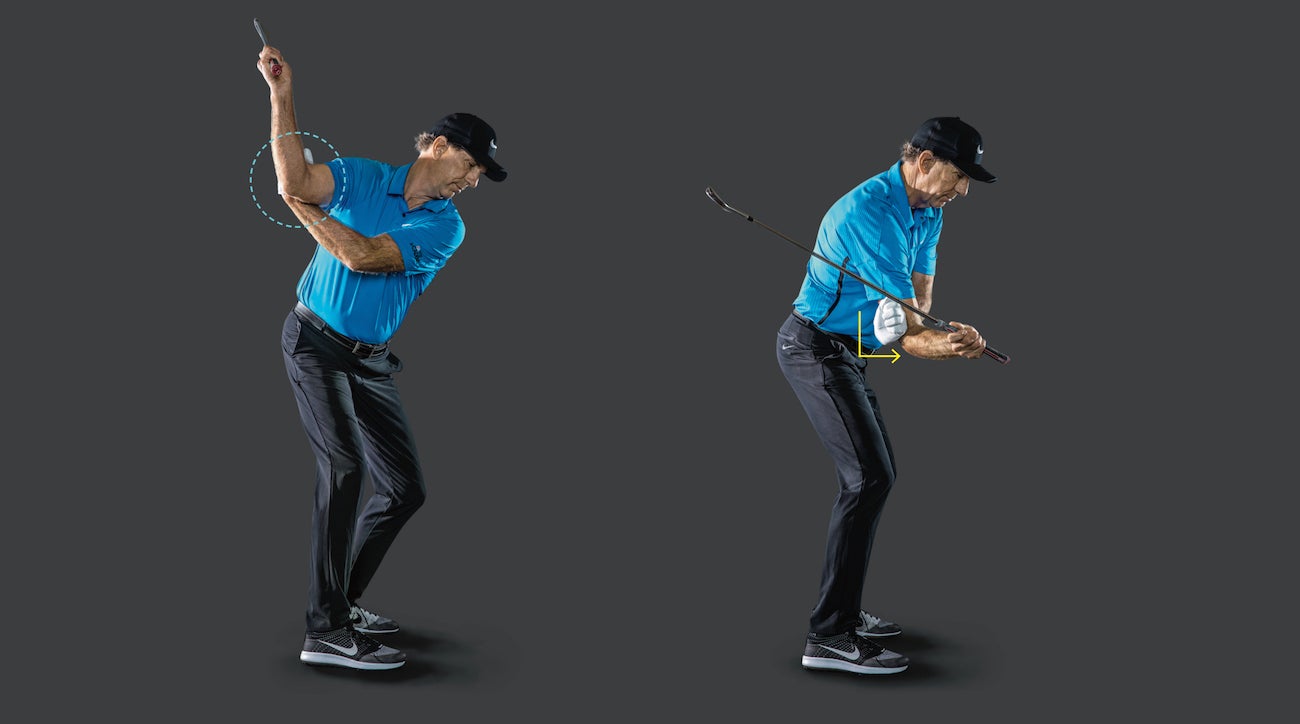
5. Loss of balance
Nothing ruins a great golf swing like a loss of balance. Assuming you’re in a good set up to start, it only takes a small loss of balance to cause you to top the ball. A good check of balance is holding your finish until your golf ball lands.
6. Keeping head down too long
I often feel sorry for newer golfers who tend to top or thin the ball. Often, they’re privy to bad information — like the advice to ‘keep their head down’.
The problem with keeping your head down is that it limits your body’s ability to move athletically. If you attempt to keep your head down, it’s very difficult to allow your body to rotate properly on your downswing to get the club down to the ground and the ball into the air.
7. Tension in hands and arms
Hands and arms that are relaxed can hang and extend. It only takes a small amount of tension or too much squeeze in your hands to cause your arms to contract and produce a topped shot. It is important that you hold a club and not squeeze. Having a proper grip — where you hold the club in your fingers rather than in your palm — can make this so much easier. Having a lot of your hand on the club allows security without tension. Not only does this make it easier to make solid contact, it also allows you to generate speed and increase distance.
8. Lack of width in your backswing
It’s possible to have a proper path in your backswing without sacrificing width. Keeping your hands away from your sternum can help to maintain the width of your backswing, making it easier to brush the grass. One of my favorite drills for feeling this is to hold your lead wrist with your trail hand. From here, make your backswing without a club and feel your trail arm pull your lead arm wide. While you practice, be sure to keep your lead underarm close to your body to maintain a good path and width.
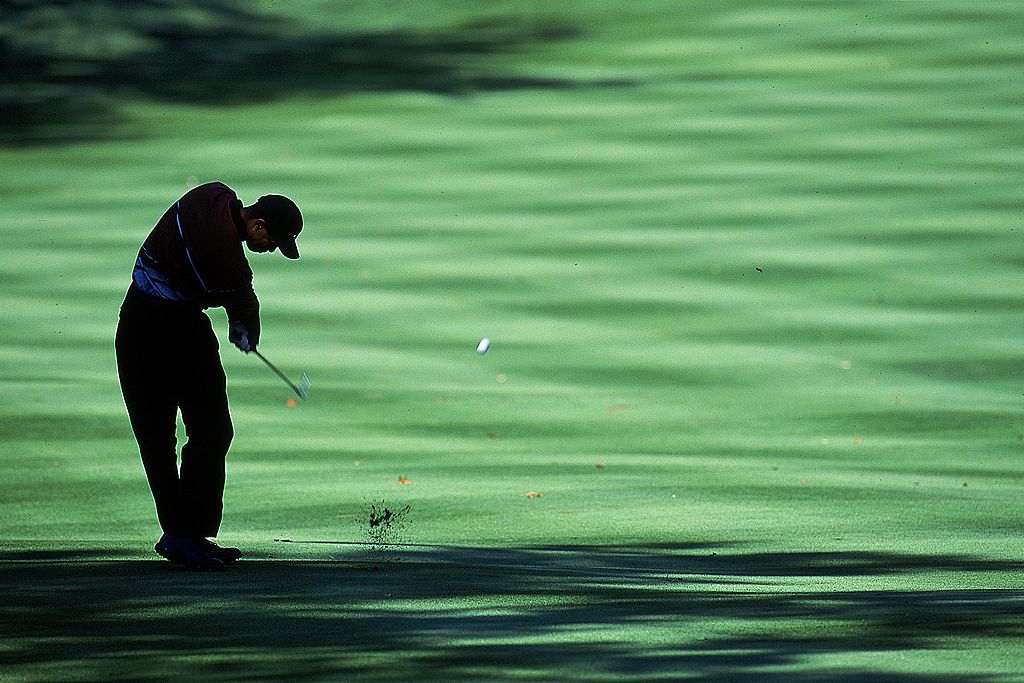
9. Staying “flat footed” on your downswing
It’s important to remember that getting the club to the ground should be a part of the whole swing, meaning that you want to be athletic. A big part of maintaining athleticism is ensuring that as you swing forward, your trail heel is still coming up naturally. If you keep your trail foot down for too long, it can be difficult to maintain the width of your forward swing. Maintaining momentum to the swing can often be a great help to this athletic movement.
10. Make up your mind and commit
Sometimes, to make a change, you have to commit to making an uncomfortable motion. It’s okay to make the opposite mistake and hit too much ground on the way to improvement. Be willing to exaggerate your changes, because all-too-often the “feel” and the “real” are very different. Make up your mind and do it. Don’t be afraid to hit that ground and make a mess.
Better technique and some practice time can serve well to limit thin and topped shots. It certainly is a lot more fun to see your golf ball fly through the air.


